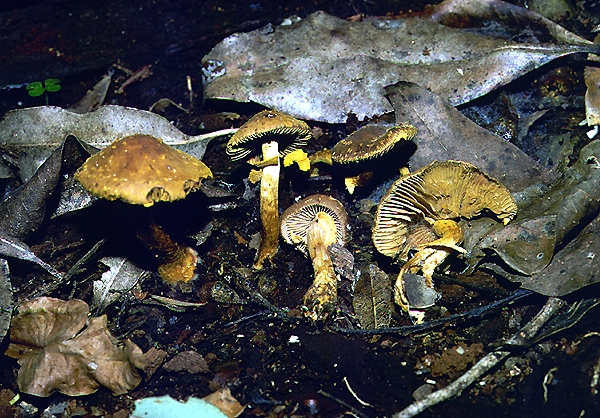
Descolea recedens (Cooke & Massee) Singer

Common name: None.
Description: The caps of this species are usually 35 cm in diameter, more or less convex, smooth and dry. The cap surface is at first covered by small, light tan, flocculose scales which mostly disappear on maturity, although some may remain at the centre. The gills are cinnamon-brown and adnate or adnexed, and the stem is up to 6 cm long and up to 0.5 cm thick, brown, smooth and dry. A very distinctive, pale tan ring is carried just above the middle of the stem; the upper surface of this ring is very strongly grooved or striated.
The spores measure 1113 × 79 µm, are ellipsoidal to lemon-shaped, brown and have a finely punctate surface.
Substratum: Descolea recedens may be found on soil among litter in eucalypt, mixed rainforest and Nothofagus (beech) forests. It usually occurs in small groups but, because of its dull colour, it is easily overlooked.
Distribution: Known from Queensland, New South Wales, Victoria and Tasmania.
Notes: This rather dull-looking fungus is always a very exciting find as it belongs to a genus that is found in Australia, New Zealand and South America, and is often associated with Nothofagus forests. The fungus forms a mycorrhizal partnership with the roots of beech, and is certain to be one of the fungi that first formed such associations in Gondwana millions of years ago. Descolea recedens can also form mycorrhizal partnerships with eucalypts. A close relative (D. maculata) is found in Western Australia and is mycorrhizal on eucalypts and ti-trees.
